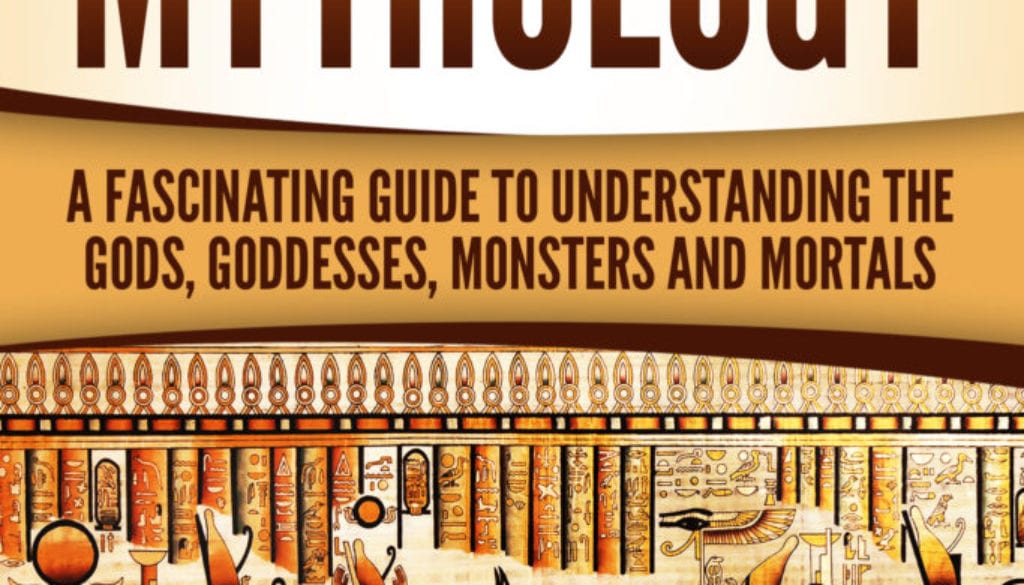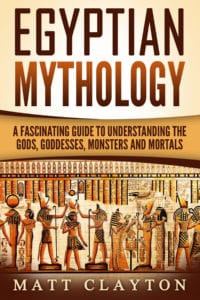Egyptian Mythology: The Sun and Creation
Similar to the myths of some other cultures, Egyptian creation stories talk of a time before creation which was filled with void and chaos—an expanse called “Nu.”
To the Egyptians, the beginning of all things was Zep Tepi (“first occasion”). The void itself was described as a primordial body of water out of which rose up a mound shaped like a pyramid—a benben. This word is similar to the name given to the sacred bird of rebirth (compare Greek phoenix), the bennu.
From the ancient city of Khemenu (known to the late Greek rulers of Egypt as Hermopolis), their story of creation starts with the formation of eight gods of the Ogdoad.
Nu was male and his female mate was Naunet. Together, they represented the dead, primordial sea.
Huh was male and his female mate was Hauhet. Together, they represented the infinite expanse of that ancient sea.
Kuk was male and his female mate was Kauket. Together, they represented the dim murkiness which was a natural part of that primeval fluid.
Amun was male and his female mate was Amaunet. Together, they represented the opaque obscurity of that earliest of waters. This quality made it impossible to discover more about the water’s nature.
With all of them filled with the theme of water, it should be no surprise that they were symbolized as frogs (male) and water snakes (female).
When the Ogdoad came together, an imbalance was created which forced the emergence of the first benben, and from it, the appearance of the sun to give its light to all of material existence.
From the ancient city of Iunu (known to the late Greek rulers of Egypt as Heliopolis), the creation story takes on a somewhat different form.
To the people of Iunu, Atum created himself out of the watery void. In some versions, Atum is seen sitting on the primordial benben; in others, he is the benben itself. Atum represented the setting sun—where the day reaches its completion.
It’s interesting to note that the Hebrews also viewed sunset as the end of the day and the moment after the sun disappears as the beginning of a new day.
Because of Atum’s association with the sun, he was sometimes called Ra or Atum-Ra. Like many of the myths in other cultures, the gods are frequently described as if they have human-like form. For instance, Atum either masturbates or sneezes his first two children into existence. They are the god of air, Shu, and the goddess of moisture, Tefnut.
The First Tragedy in Creation
While Atum was working on one of his many creation projects, both Shu and Tefnut took an interest in their environment.
“What is this watery substance surrounding the island of creation?” asked Shu.
“Father did not say much about it. Only that it was here before he arrived.”
“Aren’t you curious about it?”
“Well,” replied Tefnut, “perhaps a little. What did you have in mind?”
“Father’s busy. We shouldn’t disturb him.” Shu nodded, gaining confidence in his new decision. “Perhaps we should explore it. Maybe, if we find something of value out there, we can bring it back to Father for him to use.”
Tefnut smiled and also nodded. Abruptly, she jumped into the primordial waters and swam away. Shu followed close behind.
Later, when Atum was ready for a break, he called for his children, but did not hear a reply. Soon, he became frantic. Creation was still brand new and Atum was still learning how to deal with the nature of reality and how to shape its form. Was there something he had missed? Could there be something in the tools with which he was working that created destruction? Then, he noticed a residual swirl in the primordial waters. In an instant, he knew his children had dove into those waters and had swum away.
“Oh! My dear children.” He feared that they might become lost in the murky gloom of that infinite void. His light would not reach infinity. They would not be able to see it if they swam too far.
“What to do?”
All of a sudden, thought and action became one. He plucked out his right eye and cast it into the void. “Find my children!” was the commandment and divine intention.
Not long afterward, this new goddess—the Eye of Ra—returned with the children in tow.
Atum was so relieved that he wept and each teardrop became a new creation, each one an individual human being.
The Supreme Council of Gods
After Atum had worked a while at creating the world and many of the new gods he had needed to help manage all of physical reality, he established a supreme council of gods called the Ennead. Its nine members were Atum-Ra and his two children, Shu and Tefnut, and their two children, Geb and Nut, and their four children, Auser, Asett, Sett, and Nephthys.
In contrast to the Ogdoad, which dealt primarily with the void of chaos, the Ennead handled physical existence.
More Creation Stories
From the ancient city of Inbu-Hedj (known to the late Greek rulers of Egypt as Memphis), their story of creation involves the patron god of all craftsmen, Ptah. Here, the physical world was carefully crafted with intellectual precision, unlike the accident of Khemenu’s creation myth, or the sneeze of Iunu’s creation story.
Ptah possessed an innate ability to see a desired end result in all its details and to find all the necessary resources for its fabrication.
Egyptian myth placed the mental faculties in the heart, rather than in the brain. It was said that when Ptah spoke from the heart, the things he visualized became manifest in physical reality. As he would speak the name of something, it would suddenly appear. His spoken word was the source of all other gods, physical objects, and mortal beings.
At creation, Ptah was connected to Tatjenen, the god of the first benben.
In some respects, Ptah is similar to the Abrahamic God of Judaism and Christianity where creation was more an activity of intelligent intention. In some other respects, Ptah’s method of creation—from the heart—mimics the nature of prayer. Philosopher Rod Martin, Jr. notes, “Prayer, when done right, comes from feeling or ‘the heart.’ It never comes from thought or the words on someone’s lips. A fearful heart, asking for salvation, will receive more to fear. A confident, but humble heart, asking for anything, will receive that thing instantly. And most people are not too confident about instantly, so time (delay) becomes part of the delivery.”
From the ancient city of Waset (known to the late Greek rulers of Egypt as Thebes, and in modern times, Luxor), we receive still another version of creation. To them, Amun was an invisible force behind every aspect of creation and also an element of the Ogdoad. Amun’s form encompassed everything—from beyond the deepest underworld, and the highest of the heavens.
When Amun uttered his first cry, it shattered the sameness of the infinite nothingness and gave birth to both the Ogdoad, and its eight gods, but also the Ennead, and its nine gods.
To the people of Waset, Amun was a mystery shrouded in darkness for even all of the other gods. And the attributes and skills of all the other gods were merely one aspect or another of Amun. The inhabitants of Waset considered their city to be the location of the original benben.
The Sun—A Pivotal Aspect of Creation
Central to all of these stories is the appearance of the sun. All of Kemet (Egypt) worshiped at least one aspect of the sun. In fact, Heliopolis was literally “sun city.”
When Atum plucked out his eye in order to find his children, Shu and Tefnut, that new goddess not only had the ability to perceive, but also the ability to cast the necessary light on her surroundings in order to see more clearly. The Eye of Ra has been represented throughout Egyptian myth by various goddesses. The list is long and includes Bastet, Hathor, Mut, Sekhmet, and Wadjet. This “eye” was sometimes symbolically represented as the solar disk. On the back of the American dollar, it may also be the eye in the benben that is glowing above a truncated pyramid.
A number of gods were more directly associated with the sun. Of course, there is Ra, who represented the sun at or near zenith, when its blazing light does most of its work in nourishing the plants of the physical world.
Naturally, the sun has different aspects to its daily cycle. Khepri took the first visible slot of the day as the sun rose. Because of this “newborn” state, he also represented rebirth.
The lesser god, Aten, represented the perceptible disk of the sun, but not any of its life-giving warmth or light.
As we’ve already seen, Atum represented the setting sun, which ties in thematically with his status as a source of creation. The setting sun completes each day, and Atum was able to complete each creation by giving it form, substance, and persistence.
And Ptah was long associated with the sun after it set. During each night, the sun replenished itself, preparing for the new day. Besides his skills as a craftsman, Ptah was also a god of the arts and biological creation (fertility).
Want more?
Now you can grab this Kindle book for free by clicking here.


